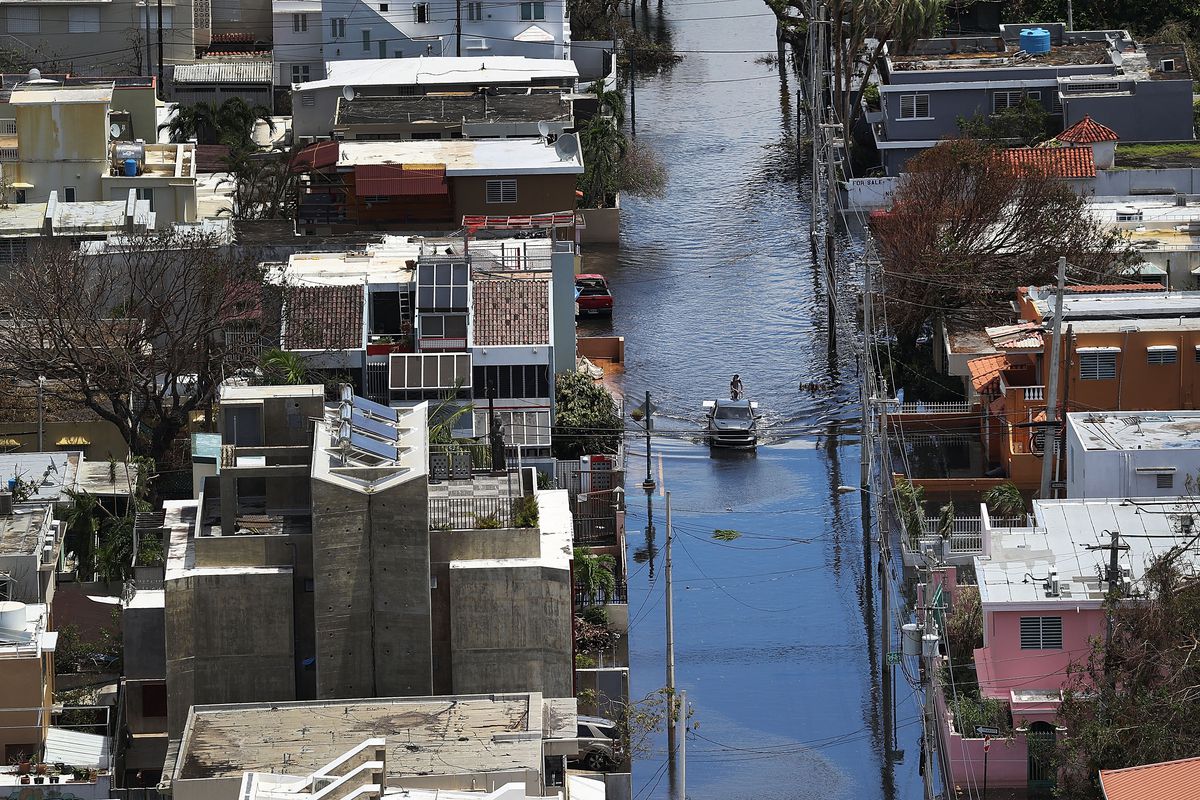Hurricanes not the result of climate change …. Focus should be on building more storm shelters
By Dr. Madhav L. Khandekar and Tom Harris
A Washington Post-ABC News poll released on Thursday shows that 55% of Americans think that the severity of recent hurricanes is most likely “the result of global climate change.” That people believe this is not surprising—we are told over and over: man-made global warming has made the Gulf of Mexico warmer and the air more humid thereby making tropical cyclones—called hurricanes in the North Atlantic—more frequent and more intense. ‘We must reduce our carbon dioxide (CO2) emissions to lessen the increasing hurricane threat,’ they claim.
But this is completely wrong. Dr. Roy Spencer, a principal research scientist at the University of Alabama in Huntsville explains that “major hurricanes don’t really care whether the Gulf [of Mexico] is above average or below average in temperature.” Similarly, M. Mohapatra and V. Vijay Kumar of the India Meteorological Department state in their March 2017 research paper, “there is a decreasing trend in the tropical cyclone number over the North Indian Ocean in recent years, though there is an increasing trend in the sea surface temperature…”
So, if not temperature, what does make one hurricane season worse than another?
America’s ‘hurricane guru,’ the late Dr. Bill Gray, emeritus professor of atmospheric science at Colorado State University, showed that the seasonal hurricane frequency is determined by six factors:
1 – The rotational tendency, or vorticity, already present in the atmosphere.
2 – Pressure gradients determined by latitude.
3 – Wind shear, the changes in wind speed and direction that occur between layers in the atmosphere.
4 – Ocean thermal energy.
5 – The rate of change of temperature with altitude.
6 – Relative humidity in the mid-troposphere.
Of these six factors, only wind shear has been exceptional this year in the Gulf of Mexico. It was very low wind shear, not temperature, vorticity, humidity or anything else, that is therefore the main cause of the high activity in this year’s hurricane season. And wind shear is a natural phenomenon that varies across the globe and is determined by a host of meteorological factors, none of which are under human control.
The global warming/hurricane connection completely falls apart when one looks at the observational data. For example, it was during the 1945-77 global cooling period, when ocean temperatures worldwide were undoubtedly lower than today, that we witnessed stronger hurricanes than now. For example, Hurricane Camille, the second-most intense tropical cyclone to strike the U.S. on record, slammed into Mississippi as a category 5 (the strongest) hurricane on August 18, 1969, producing a storm surge of 7.3 meters.
The most powerful tropical cyclone on record worldwide was not recent either. Immediately following the cooling period, the 2,200 km-wide ‘Super Typhoon’ Tip, the strongest ever, made landfall in southern Japan on October 19, 1979 (Irma was 680 km across; Harvey 400 km). The biggest storm surges worldwide were 14.5 meters in Australia in 1899 and 13.6 meters in Bangladesh in 1876. During the warmer 20th and 21st centuries, no tropical cyclone was strong enough to generate a surge greater than 10 meters.
The fact that hurricanes and other tropical cyclones are not caused by, or even significantly enhanced by man does not give us an excuse to do nothing about them, however. Florida and Texas need to engage in ‘vertical evacuation’ by building multistory storm shelters that allow residents to take refuge above the storm surge, instead of today’s ineffective ‘horizontal evacuation,’ forcing people to flee the waves on clogged highways. The U.S. should look to India’s storm shelter network for an example of success in this regard—no one need walk more than one kilometer anywhere on India’s coast to get to a shelter. If India can afford it, why not the U.S.?
It is time to develop improved early warning systems and more storm shelters. Concerning ourselves with CO2 emission reduction is a wasteful distraction and will have no impact on future hurricane strength or frequency.
____________________________________________________
Dr. Madhav Khandekar is a former Research Scientist with Environment Canada. He was an Expert Reviewer for the 2007 climate change documents prepared by the UN climate body, the IPCC. Tom Harris is Executive Director of the International Climate Science Coalition.

